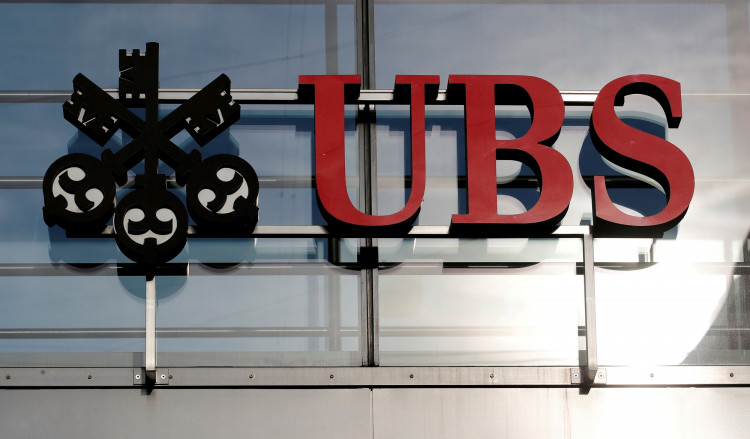On Friday, June 9, UBS CEO Sergio Ermotti hinted at the Swiss Economic Forum that the takeover of rival Credit Suisse would be finalized on June 12, marking the biggest banking deal since the global financial crisis in 2008.
This timing aligns with the earliest date set out in the timetable provided by UBS earlier this week. Ermotti stated, "Starting Monday, we will become new colleagues, together defining the right corporate culture for the company and every employee."
A key hurdle was cleared when UBS signed a guarantee agreement with the Swiss government on Friday, ensuring coverage for potential losses stemming from unwanted Credit Suisse assets.
Under the agreement, UBS will bear the first 5 billion francs of losses in selling off and gradually closing certain Credit Suisse assets. The Swiss government will cover subsequent losses up to a maximum of 9 billion francs (approximately $9.98 billion).
The assets covered by the agreement primarily include loans, derivatives, legacy assets, and structured products from Credit Suisse's non-core divisions, amounting to around 44 billion francs, or about 3% of the total assets of the merged group.
The Swiss government clarified that losses would be calculated net, taking into account any profits from the special investment portfolio. Both the government and UBS share the primary goal of minimizing losses from asset management, and avoiding the use of the loss guarantee as much as possible. UBS management has also stated they will do everything possible to avoid passing on the cost of acquiring Credit Suisse to Swiss taxpayers.
Vontobel analyst Andreas Venditti estimates that the final asset disposal losses will likely be at the lower end of the 5-10 billion franc range, suggesting that UBS could cover the losses without invoking the government guarantee agreement, thus not using taxpayer money. Insiders also stated that UBS has thoroughly examined Credit Suisse's books and is confident that the agreed-upon guarantee amount is sufficient.
The Swiss government announced that the loss guarantee agreement will remain effective after UBS completes the acquisition of Credit Suisse until the related Credit Suisse assets are all realized or completely closed. As part of the deal, Credit Suisse must keep its headquarters in Switzerland, pay an initial fee of 40 million francs for the government guarantee tool, and an annual fee of 0.4% on the 9 billion francs. The government will have some say in the management of the assets.
Simultaneously, UBS has about three months to provide the government with a business plan proposal, detailing how it intends to reduce the asset portfolio covered by the guarantee agreement, and the expected net loss amount. The plan must also include financial forecasts and a capital plan with risk-weighted asset forecasts.
Both parties also have a 90-day window to evaluate whether certain asset items need to be added or removed. After that, if UBS believes retaining certain assets would generate more value, it can apply to remove these assets from the guarantee agreement, with approval required from the Swiss government.
UBS will also reap some regulatory benefits, such as temporary permission to use some of the regulations previously applicable to Credit Suisse and retain its current liquidity rules. It will also be able to continue using its current method for calculating risk-weighted assets. Before the Swiss government imposes higher capital requirements on the enlarged bank post-acquisition, UBS has a grace period of over two years until early 2026.
The Swiss government stated that estimated loss figures will be published in the third quarter of this year, with the scale of the losses "largely dependent on the actual reduction of relevant assets and market development". Therefore, it is currently impossible to estimate the likelihood and amount involved in using the guarantee agreement.
Following the merger, the newly formed Swiss financial titan will have a balance sheet of $1.6 trillion, about twice the size of the Swiss economy, with assets under management reaching up to $5 trillion. This deal grants UBS what's referred to as the "crown jewel" of Credit Suisse's retail banking business, saving substantial duplicate construction costs and bolstering UBS's leading position in global wealth management.
UBS CEO Ermotti stated on Friday that the coming months will be "bumpy" as they begin integrating Credit Suisse's business, with potentially painful decisions to be made. "We must be clear, this is an acquisition, not a merger," he said. However, he declined to comment on the scale of potential layoffs, with the new group's global workforce possibly reaching 120,000.
Upon completion of the acquisition, Credit Suisse's European stocks and American Depositary Shares (ADS) will be delisted from the Swiss Stock Exchange and the New York Stock Exchange. The Swiss Stock Exchange indicated earlier that Credit Suisse shares would be delisted as early as June 13. Under the all-stock acquisition agreement, Credit Suisse shareholders will receive one UBS share for every 22.48 shares they hold.
It was previously reported that UBS is considering delaying its quarterly financial report until the end of August to handle the complexities resulting from the acquisition of Credit Suisse. Some have called for UBS to retain Credit Suisse's Swiss domestic business as an independent entity, preserving its 167-year-old heritage while ensuring competition.
But UBS management stated last week that the bank is still analyzing the situation, and the "base-case scenario" remains a full integration of Credit Suisse with UBS. Decision-making won't be swayed by "nostalgic feelings." In May, UBS restructured its management, with the CEO of Credit Suisse set to join the executive board.
UBS's U.S. shares fell by as much as 0.5% on Friday, then cut its losses by half, while European shares also dropped 0.3%. Credit Suisse's European shares fell 0.4%, while U.S. shares rose nearly 1%.






